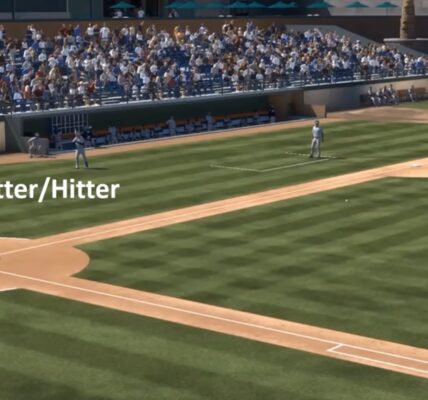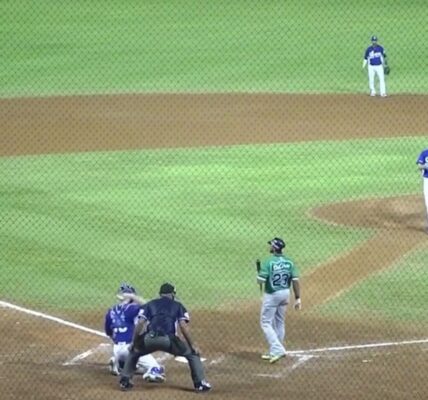In the complex world of baseball, every little term has its story. Among these is “BB”, an abbreviation that fans and players may frequently come across. This couplet of Bs, in the world of baseball, is directly related to the concept of a “base on balls”. It’s a situation that presents itself when a batter is given the opportunity to move to the first base due to receiving four pitches that are not positioned within the strike zone within the span of a single at-bat.
Diving deeper into the game’s technicalities, this terminology is crucial to understanding how a batter can strategically turn the game in their favor or how a pitcher might undergo a challenging part of their play.
Decoding the Acronym “BB”: A Deeper Look
In the baseball lexicon, “BB” plays a significant role, representing the term “Base on Balls”. When a batter squares off against a pitcher, the showdown can result in one of three potential scenarios: a base hit, a strikeout, or a walk.
The BB is essentially baseball parlance for a walk. The “strikeout” scenario transpires when a batter accumulates three strikes. However, if a batter receives four balls prior to achieving three strikes, they have successfully earned a walk, also known as a Base on Balls (BB).
The determination of balls and strikes is at the discretion of the home plate umpire. The so-called strike zone typically extends across the width of the plate, ranging from the batter’s midsection to their knees. Once a pitch is thrown, the umpire instantaneously makes the call of ball or strike.
Why is “BB” Also Known as a Walk?
The correlation between the term “BB” and a “walk” in baseball is based on the batter’s progression that takes place during the gameplay. When “BB” – short for Base on Balls – pops up, it signifies that the batter has been permitted by the pitcher to ‘walk’ to the first base.
This occurs after the pitcher has tossed four balls in the batter’s direction. Consequently, the batter is promoted to a baserunner and secures their position at first base. While “walk” is a common colloquial term used to describe this event, in the official statistical records of the game, it is annotated as a “BB”.
Baseball, being a sport rich in jargon and abbreviations, has “BB” as one of its many shorthand terms. Here’s an expansion on how it relates to the game dynamics:
- A Walk: This popular slang term is essentially a “Base on Balls”. It describes the scenario where a batter is able to stride to the first base, courtesy of the pitcher’s four balls;
- Baseball and Abbreviations: The sport is laden with abbreviations for a variety of terms, enhancing communication and comprehension amongst players, coaches, umpires, and fans alike. “BB” certainly stands out amongst these abbreviations due to its strategic implications in the gameplay.
The Significance of Walks in Baseball: A Tactical Advantage
Walks, or “BB” as they are denoted in baseball notation, are not just a consequence of a pitcher’s inaccuracy; they also hold a substantial strategic weight in a game. By granting a Base on Balls, the batting team gains a profound advantage, with a player securing their position on the first base as a baserunner without the risk of an out.
The presence of a baserunner amplifies the batting team’s scoring probability for the innings. Such seemingly minor transformations on the field can, in fact, dramatically swing the game’s balance.
But the implications of a walk extend even further when the field already hosts baserunners:
- If the diamond is already populated with baserunners and a walk is enforced, the pitcher essentially boxes themselves into a corner. In this scenario, each base maintains a runner, thereby upping the ante;
- More critically, if the bases are fully occupied, and a walk transpires, the runner stationed at the third base obtains a free passport to the home plate. This produces a run in favor of the batting team.
Walks, therefore, simultaneously engender positive and negative opportunities. For the batting team, it creates scoring possibilities, and for the pitching team, it presents an increased level of difficulty in defending runs.

Unfolding the Intent Behind Intentional Walks
In baseball, the play might take a surprising turn with the involvement of an intentional walk, a meticulously calculated move on the pitching team’s part. Here, the pitcher deliberately throws four balls that are unreachable by the batter, compelling their walk to the first base.
This kind of walk isn’t an outcome of the pitcher’s lack of skills or control. Instead, it’s a strategic decision made to manipulate the game dynamics in favor of the defending team. The catcher signals this intention by standing up and gesturing away from the batter, leading to four successive balls thrown by the pitcher.
The Strategy Behind Intentional Walks
This unconventional approach might be initiated due to several reasons. Here are a few instances where a pitcher might resort to an intentional walk:
- To avoid a formidable batter: A batter with an impressive track record or on a scoring spree might intimidate a pitcher. Instead of risking a hit, the pitcher would rather deal with a less experienced or skillful succeeding batter;
- When the situation demands a tactical response: For instance, if runners are stationed at the second and third bases with just one out, an intentional walk could be a wise defensive move. This action sets up the possibility of a double play. If successful, a double play can terminate the innings without any surrendered runs, thereby minimizing damage to the pitching team.
Cogent Queries Surrounding BB and Walks in Baseball
Interestingly, a batter does not possess the authority to decline a walk. In case a pitcher consciously takes a decision to walk a hitter, the hitter is obliged to accept it. The batter, in theory, might try to swing at these intentional pitches, but that is generally not an advisable course of action and could lead to potential repercussions from the coaching staff. Simply put, a batter cannot say no to a walk.
Walks or ‘BB’ as they are represented in the statistical sheets, do not significantly influence the batter’s career statistics. It is separately noted down for each game, indicating the number of times the batter was walked. If a batter’s initial at-bat results in a walk, his/her record would still be represented as 0-0, accompanied by a ‘BB’.
Contrary to a common misconception, a walk does not adversely affect a player’s batting average. As it does not qualify as an out or a hit, it remains neutral in terms of the batting average. Consequently, a player’s batting average remains the same post a walk.
There’s no predefined cap on the number of intentional walks that can be granted in a baseball game. Theoretically, every batter could be intentionally walked if the defensive side chooses to do so.
Interestingly, a walk is not counted as an ‘at-bat’. Let’s consider a scenario where a hitter has three at-bats and walks in each of them, his record would still be showcased as 0-0, but with 3 ‘BB’s. Since a ‘Base on Balls’ isn’t denoted as an ‘at-bat’, it doesn’t influence the batting average.
A walk is granted when a pitcher throws four balls. If these balls are thrown before the pitcher manages three strikes, the batter secures a walk and advances to the first base. A ball is identified when a pitch is ruled outside of the strike zone by the umpire.
Yes, it indeed is possible to walk a batter without any actual pitches. This is referred to as an intentional walk, and it can be decided from the team’s dugout. Although classified as a walk, it allows for immediate action, negating the necessity of four pitches.
In principle, a baserunner cannot steal a base during a walk. If a runner is already at the first base and the batter is granted a walk, the runner merely advances on account of the ‘Base on Balls’. This is because a walk results in a dead ball scenario, thus putting a halt to any other actions.
In the world of baseball, where every detail matters, the weight of a baseball is a critical factor. A standard baseball typically weighs between 5 to 5.25 ounces (approximately 142 to 149 grams).
Conclusion
A walk, or ‘BB’ in baseball, carries a multitude of strategic implications and plays a pivotal role in the game’s dynamics. Whether it’s the impact on a player’s statistics, batting averages, or the prospect of intentional walks, every facet throws light on baseball’s incredible strategic depth. As spectators or participants, understanding these complex nuances further enriches the baseball-watching experience and provides deeper insight into this beloved sport.




